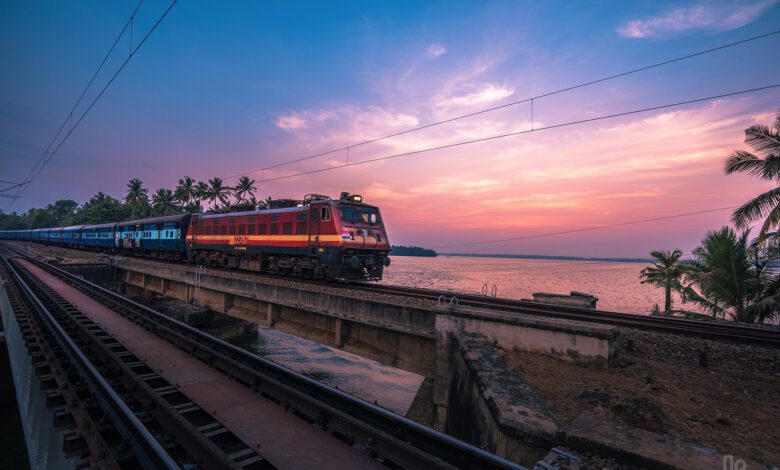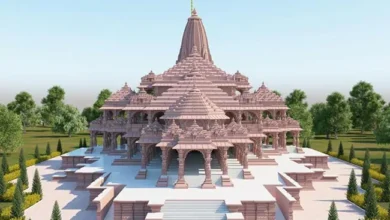Privatisation of Indian Railways: Beginning of a new era of railways in India

Last month, Railway Minister Piyush Goyal asserted that the national transporter will never be privatised. But he mentioned that private investment should be encouraged for more efficient functioning of Indian Railways.
Last year, the Railway Ministry had invited RFQ for the participation of the private sector for the operation of passenger trains over 109 OD pairs of Indian Railways routes through the introduction of 151 modern trains.
The project, which is said to be the first such initiative of private investment for running passenger trains over the Indian Railways network, would entail private sector investment of Rs 30,000 crore approximately. To do this, the operator has made available 151 new trains that will run between 109 origin-destination pairs of routes.
Immediately after the announcement, as usual the ‘Andolan-jeevis’ started opposing the decision of the government by saying ,”Modi is selling the nation, one day he will sell us too,” and thus equating liberalisation to privatisation, but it isn’t their fault as decades of Nehruvian communist economics has been sowed socialism deep into the minds of India and generations were tutored to fear the private sector.
The investment in Indian Railways has been hiked by the Modi government to Rs 2.15 lakh crore in the financial year 2021-22, from an amount of Rs 1.5 lakh crore in the financial year 2019-20
This budget has set the ball rolling with its specific announcements, and one can certainly expect more to come on the path to a robust, comfortable and efficient railway network expansion!
There is some level of skepticism about the success of the move, but the private sector’s success would depend critically on IR’s operations of track and station access. Moreover, Indian Railways have always flourished under the Modi government, be it the production of new coaches or building of extraordinary bridges, IR has been reaching new heights.
Listing a few extraordinary achievements:
- Revenue Earning Freight loading during 2018-19 was 12,215 lakh tonnes, a 5.34 percent increase on 11,596 lakh tonnes for 2017-18.
- During 2018-19, consequential train accidents decreased from 73 to 59; it stood at 41 between April – October 2019. The elimination of unmanned level crossing accidents and the sharp decline in derailment related accidents stand out as a feather in the government’s cap.
- Construction of many bridges like Dr. Bhupen Hazarika Setu, Saraighat Bridge which have contributed majorly to ease the life of Assamese people in the last 5-6 years.
- Indian Railways, Railway Coach Factory Kapurthala had achieved a new target, where this coach production produced 5.88 LHB coaches in October 2020.
- In 2009-10 as well as 2011-12 recorded 9 cases of collisions, this number reduced consistently and in 2018-19, not a single collision occurred.
- Construction of bridges like the Chenab Bridge, Bogibeel Bridge, the World’s Highest bridge and Worlds Longest Bridge respectively.
The present invitation for private operators to submit qualification bids for 151 trains would be, in the assessment of the Railway Board, only for a fraction of the total train operations — 5% of the 2,800 Mail and Express services operated by Indian Railways.
Therefore, this isn’t privatisation as ‘Andolan-jeevis’ like to term, but rather liberalisation. In fact, in 2015, the expert panel chaired by Bibek Debroy constituted by the Ministry of Railways a year earlier, said and recommended the same, that the way forward for the railways was “liberalisation and not privatisation” in order to allow entry of new operators “to encourage growth and improve services.”
Moreover, as private trains get launched, their planning and operations will help in understanding price elasticity of demand, and affordability of different technology and service levels. Besides demonstrating sources of efficiency, the data from these operations could also inform the debate on affordability of fare increases
Private trains would attract the segment of the population that is ready to pay for quality services and travel for which private operators will have to raise the level of their offering even higher, to justify higher fares.
The ultimate objective of the government of this liberalisation should be to promote the Ease of Living for all its residents, improvement of infrastructure of railway stations, which can only be achieved when optimal value can be derived from all stakeholders of the economy, but the government should certainly be careful with the fare prices, services and more.
Nevertheless, if ‘Andolan-jeevis’ were so informed about facts and correct use of terms, they wouldn’t be one.
In conclusion, the privatisation of Indian Railways is a win-win proposition for all.



